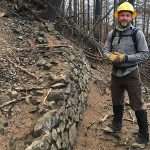By Kim Kovacs, Volunteer, Trailkeepers of Oregon Trailkeepers of Oregon has begun 2019 on a record track, despite the cancellation of a number of work parties in February. The following numbers give an indication of TKO’s activities over…
By Guy Hamblen, Crew Leader, Trailkeepers of Oregon
The art of using a crosscut saw is reawakening, especially among trail maintenance groups working in US Forest Service wilderness areas where chainsaws are not allowed.
Each year, the trees blown down across trails by winter storms must be cut before the public can safely use the trails. Trailkeepers of Oregon needs knowledgeable, experienced, and proficient sawyers to clear the trails.
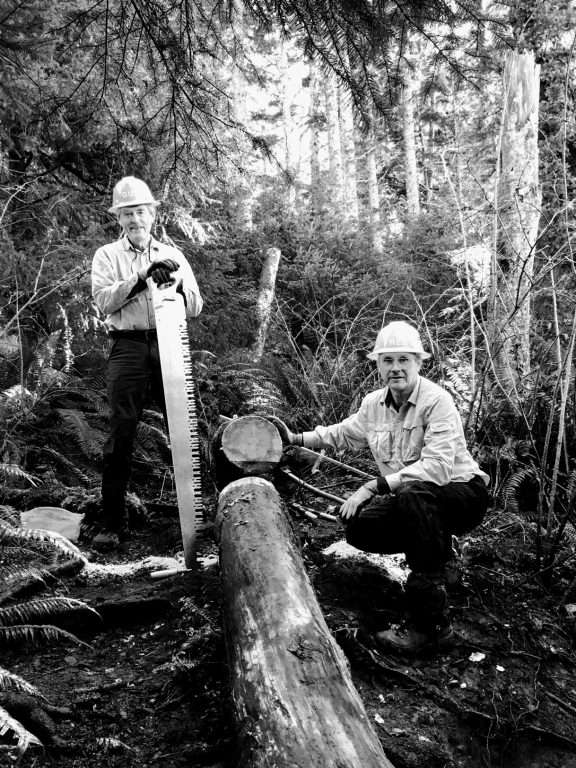
Guy Hamblen and Fred Sprague after cutting a log at Ecola State Park with a two-person crosscut saw. (Photo by Susan Schen)
TKO volunteers currently receive their sawyer training and certification from other groups, primarily Pacific Crest Trail Association (PCTA) and Washington Trails Association (WTA). All that may soon change, though. TKO is applying to the US Forest Service to set up our own sawyer program to train, evaluate, and certify sawyers. The Forest Service provides several ways for organizations to set up sawyer training programs. TKO is choosing the Forest Service’s option to have C-level certified sawyers (the highest level of certification) provide the training and evaluation. These C-level sawyers in TKO’s program will be able to certify TKO’s volunteers as well as members of other cooperating organizations and Forest Service employees.
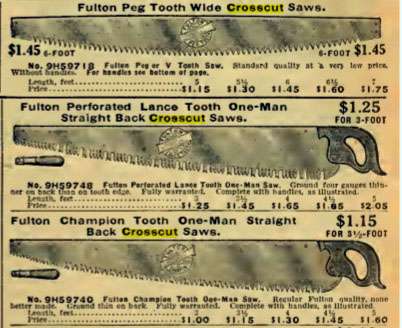
Crosscut saw advertisements from the 1912 Sears, Roebuck & Company catalog. Look at the prices!
TKO volunteers who choose to enter the world of crosscut will find a domain rich in history, vocabulary, and technical knowledge. Until the early 1940s and before the popularity of the chainsaw, most home firewood was cut by handsaws, often a crosscut saw. “Crosscut” means the saw is designed to cut across the grain of the wood. There were various types and numerous configurations, designed for one-person or two-person sawing, with a blade anywhere from a foot or so long to more than seven feet, and with dozens of designs for the teeth. In the early part of the twentieth century, the Sears, Roebuck & Company catalog presented many pages of saws from many manufacturers. None of today’s crosscut saws compare to the high quality of those saws of the early 1900s.
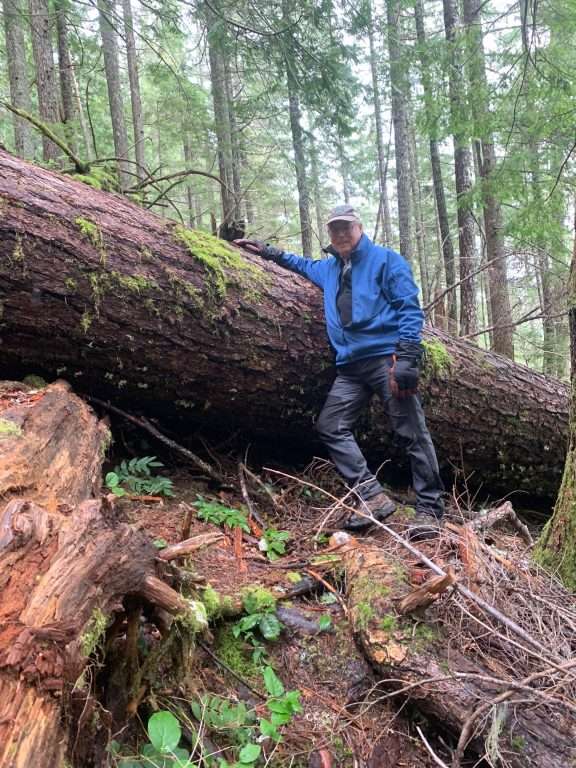
Gabe Smith leans on a 46-inch diameter log on the Sunshine Trail in the Trapper Creek Wilderness Area. (Photo by Guy Hamblen)
Other trails groups have set up sawyer programs under the same Forest Service option as TKO is applying for. Those groups include the Northwest Youth Corps (NYC), Back Country Horsemen of Oregon (BCHO), Back Country Horsemen of Washington (BCHW), and WTA. PCTA has organized under a different option, allowing them to set up their own training, evaluation, and certification programs outside of the Forest Service organizational structure. However, this option requires the approval and review at the Forest Service national level and can be time-consuming to accomplish.
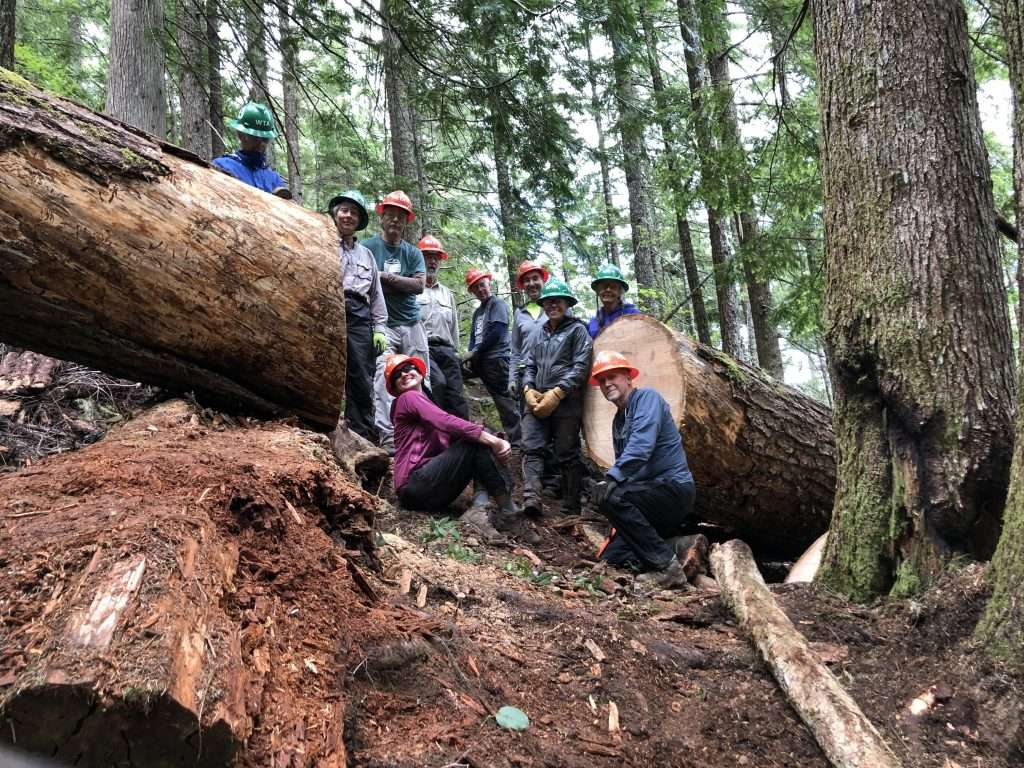
The saw team, including four TKO volunteers, after cutting the 46-inch diameter log. (Photo by Guy Hamblen)
There is a demand for many more certified TKO sawyers, so you might consider helping to meet that demand. And besides that, it’s just plain fun to use a crosscut saw and experience the art of a good, well-planned cut when the cut piece of log—the billet—drops and rolls just as you expected! Look for an announcement about TKO’s upcoming Basic Saw training class this fall!
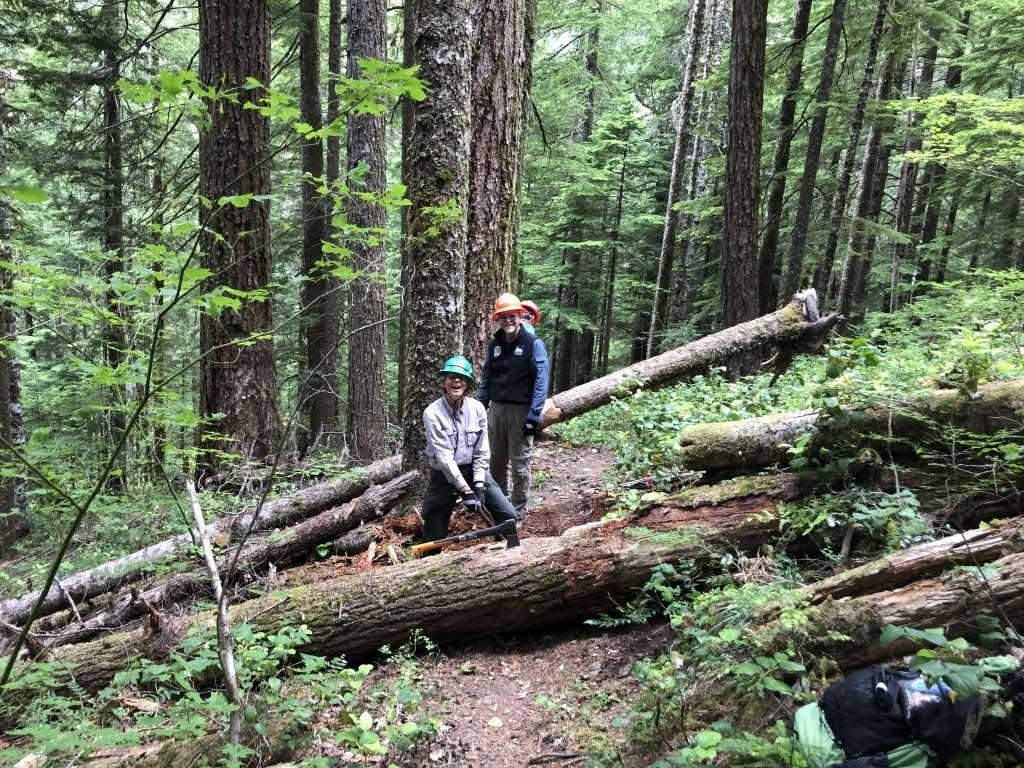
Typical Sunshine Trail: 126 logs across the trail in one mile! (Photo by Guy Hamblen)
Guy Hamblen: guy.hamblen@trailkeepersoforegon.org


